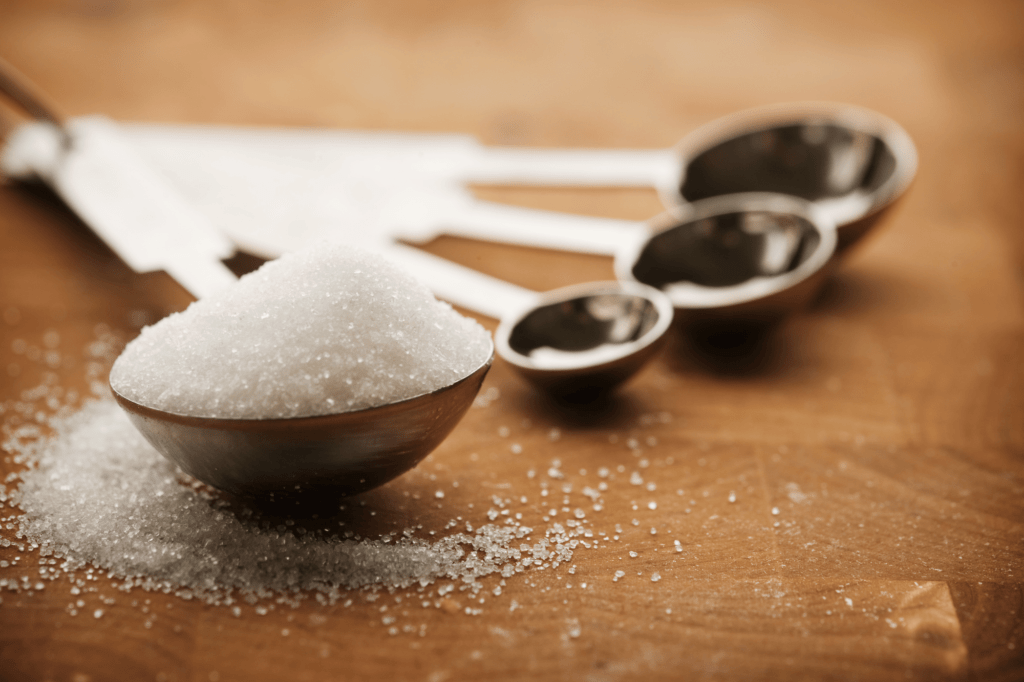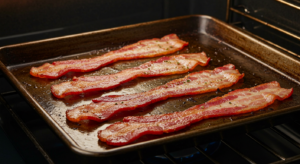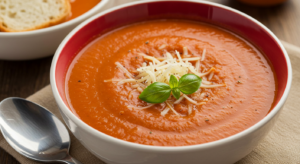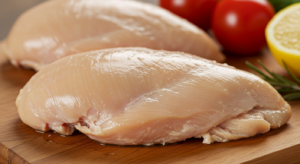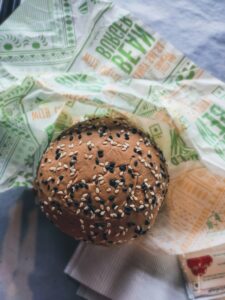Have you ever wondered how many tablespoons are in an ounce? Or how to convert between dry and fluid ounces and tablespoons? If you are a home cook or a baker, you probably encounter these questions often when following recipes or scaling them up or down. Knowing how to measure ounces and tablespoons accurately can make a big difference in the outcome of your dishes, especially when it comes to baking.
In this article, we will explain everything you need to know about ounces and tablespoons conversion, including:
- How many tablespoons are in a dry ounce and a fluid ounce
- How to measure ounces and tablespoons accurately with the right tools and methods
- Why it is important to distinguish between dry and fluid ounces and tablespoons
- Some common cooking conversions related to ounces and tablespoons
- Some frequently asked questions and answers about ounces and tablespoons
By the end of this article, you will be able to master the art of measuring ounces and tablespoons like a pro and impress your family and friends with your delicious creations. Let’s get started!
How Many Tablespoons Are In A Dry Ounce?
Before we answer this question, let’s first define what a dry ounce and a tablespoon are.
A dry ounce is a unit of weight that is equivalent to 28.35 grams. It is also equal to 1/16 of a pound or 437.5 grains. A dry ounce is different from a fluid ounce, which is a unit of volume that measures liquid ingredients. A dry ounce is commonly abbreviated as oz, while a fluid ounce is abbreviated as fl oz.
A tablespoon is a unit of volume that is equal to 3 teaspoons or 15 milliliters. It is also equal to 1/16 of a cup or 0.5 fluid ounces. A tablespoon is commonly used to measure dry ingredients such as flour, sugar, salt, and baking powder. A tablespoon is abbreviated as tbsp or T.
To convert between dry ounces and tablespoons, we need to use a conversion factor that relates the weight of a dry ingredient to its volume. This conversion factor may vary depending on the type and density of the ingredient, but for most common dry ingredients, such as flour and sugar, we can use the following formula:
1 dry ounce = 2 tablespoons
This means that if you have 1 dry ounce of flour or sugar, you can measure it as 2 tablespoons. Conversely, if you need 1 dry ounce of flour or sugar for a recipe, you can use 2 tablespoons instead.
Here is a conversion table that shows some common amounts of dry ounces and their equivalent in tablespoons:
| Dry Ounces | Tablespoons |
|---|---|
| 1 | 2 |
| 2 | 4 |
| 3 | 6 |
| 4 | 8 |
| 5 | 10 |
| 6 | 12 |
| 7 | 14 |
| 8 | 16 |
You can also use a converter tool to easily convert between dry ounces and tablespoons for any amount you need. For example, if you want to know how many tablespoons are in 1.5 dry ounces, you can enter the value in the converter and get the result as 3 tablespoons1.
Knowing how many tablespoons are in a dry ounce can help you measure dry ingredients more accurately and easily when following recipes or scaling them up or down. In the next section, we will learn how many tablespoons are in a fluid ounce and how to measure liquid ingredients with tablespoons.
How Many Tablespoons Are In A Fluid Ounce?
Now that we know how many tablespoons are in a dry ounce, let’s move on to the fluid ounce. A fluid ounce is a unit of volume that is equal to 1/16 of a pint or 1/128 of a gallon in the US customary system. It is also equal to 29.57 milliliters or 0.5 tablespoons. A fluid ounce is different from a dry ounce, which is a unit of weight that measures solid ingredients. A fluid ounce is abbreviated as fl oz, while a dry ounce is abbreviated as oz.
A tablespoon is a unit of volume that is equal to 3 teaspoons or 15 milliliters. It is also equal to 1/16 of a cup or 0.5 fluid ounces. A tablespoon is commonly used to measure liquid ingredients such as water, milk, oil, and vinegar. A tablespoon is abbreviated as tbsp or T.
To convert between fluid ounces and tablespoons, we need to use a conversion factor that relates the volume of a liquid ingredient to its volume. This conversion factor is the same for all liquid ingredients, regardless of their type and density. We can use the following formula:
1 fluid ounce = 2 tablespoons
This means that if you have 1 fluid ounce of water or milk, you can measure it as 2 tablespoons. Conversely, if you need 1 fluid ounce of water or milk for a recipe, you can use 2 tablespoons instead.
Here is a conversion table that shows some common amounts of fluid ounces and their equivalent in tablespoons:
| Fluid Ounces | Tablespoons |
|---|---|
| 1 | 2 |
| 2 | 4 |
| 3 | 6 |
| 4 | 8 |
| 5 | 10 |
| 6 | 12 |
| 7 | 14 |
| 8 | 16 |
You can also use a converter tool to easily convert between fluid ounces and tablespoons for any amount you need. For example, if you want to know how many tablespoons are in 1.5 fluid ounces, you can enter the value in the converter and get the result as 3 tablespoons1.
Knowing how many tablespoons are in a fluid ounce can help you measure liquid ingredients more accurately and easily when following recipes or scaling them up or down. In the next section, we will learn why it is important to distinguish between dry and fluid ounces and tablespoons and how to measure them correctly with the right tools and methods.
Why It Is Important To Distinguish Between Dry And Fluid Ounces And Tablespoons
You may be wondering why it matters to use different units of measurement for dry and liquid ingredients. After all, an ounce is an ounce, right? Well, not exactly. An ounce can refer to two different things: a unit of weight or a unit of volume. A dry ounce is a unit of weight that measures solid ingredients, such as flour, sugar, salt, and baking powder. A fluid ounce is a unit of volume that measures liquid ingredients, such as water, milk, oil, and vinegar.
The problem is that different substances have different densities, which means that they occupy different amounts of space for the same weight. For example, 1 dry ounce of flour weighs the same as 1 dry ounce of sugar, but they have different volumes. If you measure them by fluid ounces, you will get different amounts of each ingredient. Likewise, 1 fluid ounce of water weighs the same as 1 fluid ounce of oil, but they have different weights. If you measure them by dry ounces, you will get different amounts of each ingredient.
This can cause confusion and inconsistency when following recipes or scaling them up or down. If you use the wrong type of measurement for an ingredient, you may end up with too much or too little of it, which can affect the texture, flavor, and appearance of your dish. This is especially important for baking, which requires precise measurements and ratios to achieve the desired chemical reactions and results.
To avoid this problem, you need to distinguish between dry and fluid ounces and tablespoons and use the appropriate measuring tools and methods for each type of ingredient. In the next section, we will show you how to measure ounces and tablespoons accurately with the right tools and methods.
How To Measure Ounces And Tablespoons Accurately With The Right Tools And Methods
Now that we know how many ounces and tablespoons are in different types of ingredients, let’s learn how to measure them accurately with the right tools and methods. Measuring ingredients correctly is essential for achieving consistent and delicious results in cooking and baking. Here are some tips and tricks to help you measure ounces and tablespoons like a pro:
- Use dry measuring cups for dry ingredients and liquid measuring cups for liquid ingredients. Dry measuring cups are designed to be filled to the top and leveled off with a knife or a spatula. Liquid measuring cups are designed to have a spout for pouring and markings on the side for reading the volume. Do not use dry measuring cups for liquids or vice versa, as this can cause inaccurate measurements and affect your recipe.
- Use measuring spoons for small amounts of dry or liquid ingredients. Measuring spoons are usually sold in sets of four or six, ranging from 1/4 teaspoon to 1 tablespoon. Fill the spoon with the ingredient and level it off with a knife or a spatula for dry ingredients, or fill it to the rim without spilling for liquid ingredients. Do not use regular spoons for measuring, as they are not standardized and can vary in size and shape.
- Use a kitchen scale for measuring ingredients by weight. A kitchen scale is a handy tool that can measure ingredients by weight in ounces, grams, or other units. This is especially useful for baking, where precise measurements are crucial for achieving the right texture and consistency. To use a kitchen scale, place a bowl or a plate on the scale and zero it out. Then add the ingredient to the bowl or plate until you reach the desired weight. You can also use a conversion chart or a calculator to convert between weight and volume units if needed.
- Use bottle caps, your thumb, or your cupped hand for estimating tablespoons of liquid ingredients. If you don’t have any measuring tools with you, you can use some common objects or your own body parts as references to estimate tablespoons of liquid ingredients. For example, some bottle caps can hold about 1 tablespoon of liquid, so you can use them to measure oil, vinegar, or other similar ingredients. You can also use the tip of your thumb as a guide for 1 tablespoon, or your cupped hand for 2 tablespoons. However, keep in mind that these methods are not very accurate and may vary depending on the size and shape of the object or your hand.
- Use online tools or apps to convert between different units of measurement. If you need to convert between different units of measurement, such as fluid ounces to milliliters, tablespoons to teaspoons, cups to quarts, etc., you can use online tools or apps that can do the math for you. For example, you can use this online converter1 to easily convert between fluid ounces and tablespoons for any amount you need. You can also use this online calculator2 to convert between different units of volume, weight, length, temperature, etc.
By following these tips and tricks, you will be able to measure ounces and tablespoons accurately with the right tools and methods. This will help you improve your cooking and baking skills and ensure delicious results every time. In the next section, we will answer some frequently asked questions related to ounces and tablespoons conversion.
Conclusion
In this article, we have learned everything you need to know about ounces and tablespoons conversion, including:
- How many tablespoons are in a dry ounce and a fluid ounce
- How to measure ounces and tablespoons accurately with the right tools and methods
- Why it is important to distinguish between dry and fluid ounces and tablespoons
- Some common cooking conversions related to ounces and tablespoons
- Some frequently asked questions and answers about ounces and tablespoons
We hope this article has helped you improve your cooking and baking skills and ensure delicious results every time. If you have any questions, comments, or feedback, please feel free to leave them below or contact us. We would love to hear from you!
Thank you for reading and happy cooking! 😊
FAQ
In this section, we will answer some frequently asked questions related to ounces and tablespoons conversion.
How many teaspoons are in an ounce?
There are six teaspoons in one fluid ounce. To convert fluid ounces to teaspoons, multiply the fluid ounce value by 6. For example, to convert 2 fluid ounces to teaspoons, multiply 2 by 6, which makes 12 tsp equal to 2 fl oz.
How many cups are in an ounce?
There are 0.125 cups in one fluid ounce. To convert fluid ounces to cups, divide the fluid ounce value by 8. For example, to convert 4 fluid ounces to cups, divide 4 by 8, which makes 0.5 cups equal to 4 fl oz.
How many grams are in an ounce?
There are 28.35 grams in one dry ounce. To convert dry ounces to grams, multiply the dry ounce value by 28.35. For example, to convert 3 dry ounces to grams, multiply 3 by 28.35, which makes 85.05 g equal to 3 oz.
How many milliliters are in an ounce?
There are 29.57 milliliters in one fluid ounce. To convert fluid ounces to milliliters, multiply the fluid ounce value by 29.57. For example, to convert 5 fluid ounces to milliliters, multiply 5 by 29.57, which makes 147.85 ml equal to 5 fl oz.
How to convert between metric and imperial units?
To convert between metric and imperial units of measurement, you can use online tools or apps that can do the math for you. For example, you can use this online converter to easily convert between fluid ounces and tablespoons for any amount you need. You can also use this online calculator to convert between different units of volume, weight, length, temperature, etc.
Is 1 oz the same as 1 fl oz?
No, they are not the same. An oz is an abbreviation for a dry ounce, which is a unit of weight that measures solid ingredients. An fl oz is an abbreviation for a fluid ounce, which is a unit of volume that measures liquid ingredients.
Does 2 tbsp equal 1 oz?
Yes, they are equal. One fluid ounce is equal to two tablespoons. To convert fluid ounces to tablespoons, multiply the fluid ounce value by 2.
What does 1 oz of water look like?
One fluid ounce of water looks like a small shot glass or a medicine cup. It is also equivalent to two tablespoons or six teaspoons of water.
What is half of 1 oz?
Half of one fluid ounce is equal to one tablespoon or three teaspoons.
How to measure a tablespoon without a measuring spoon?
If you don’t have a measuring spoon, you can use some common objects or your own body parts as references to estimate a tablespoon of liquid ingredients. For example, some bottle caps can hold about one tablespoon of liquid, so you can use them to measure oil, vinegar, or other similar ingredients. You can also use the tip of your thumb as a guide for one tablespoon or your cupped hand for two tablespoons. However, keep in mind that these methods are not very accurate and may vary depending on the size and shape of the object or your hand.

